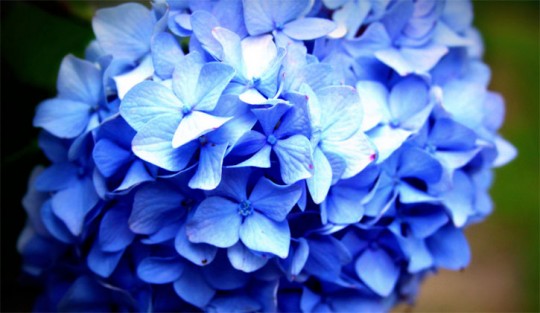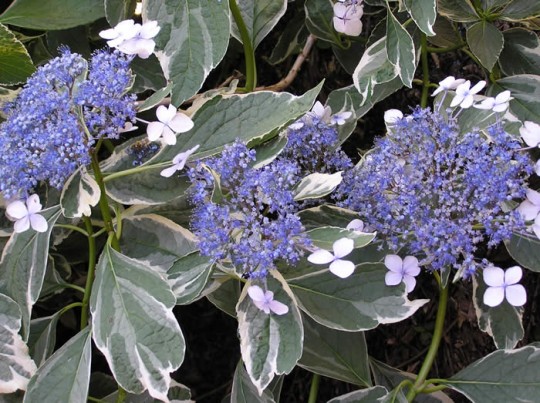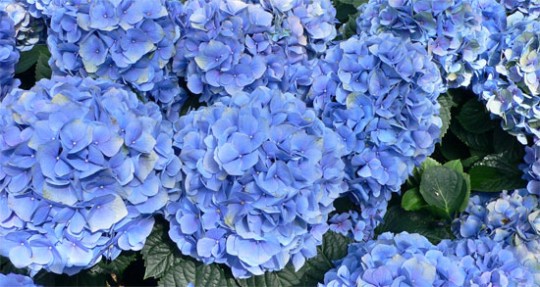Hydrangeas: Distinctly Southern
July 31, 2010
Photo by Mandy Fails of Atmore for NorthEscambia.com, click to enlarge.
Nothing defines a southern landscape more than hydrangeas.
 These beautiful, large flowering shrubs fill gardens with their green, leafy foliage and incredible blooms during the warm months.
These beautiful, large flowering shrubs fill gardens with their green, leafy foliage and incredible blooms during the warm months.
In order to ensure consistent and reliable blooms, these shrubs must be cared for correctly. In addition to proper site location, fertilizer and moisture conditions, hydrangeas may require pruning. Proper pruning includes correct timing.
Hydrangea aficionados are constantly debating pruning techniques. There are many different types of hydrangeas and pruning differs according to the type. It is a big genus of plants and so it’s important to know what type of hydrangeas you may have and on what type of wood they bloom on.
Blooms on old wood, prune after flowering
The bigleaf hydrangeas, known scientifically as Hydrangea macrophylla, are what most people think of when you mention hydrangeas. Most gardeners will know these as mopheads (also called hortensias) and lacecaps. Many of these blooms will be blue or pink although other colors now are available.
Many large colonies of bigleaf hydrangeas have existed around old homes for decades, surviving and blooming in spite of neglect. This tells us that it is not necessary to prune bigleaf hydrangeas.
However, if you want to keep these shrubs within a defined boundary, control their height or rejuvenate old shrubs, it will be necessary to prune them.
Bigleaf hydrangeas can be reduced in size immediately after flowering. A general rule of thumb is that you may remove up to a third of the shrub’s height. Be sure to complete your pruning before August. This is critical because next year flower blooms start to form in August. Pruning after August will remove next year’s blooms.
There now is a small group of bigleaf hydrangeas that are everblooming or remontant. Endless Summer® is one well-known brand. According to the developers of these reblooming hydrangeas, remove spent flowers to encourage rebloom. They are quite forgiving and will not suffer if left unpruned or pruned at the wrong time because these cultivars bloom on both old and new growth.
Our native oakleaf hydrangea (Hydrangea quercifolia) is a large, deciduous shrub that can grow up to six feet tall. It has deeply lobed, oak-like leaves which turn bronze in the fall. This plant does not usually need pruning. If reshaping or size-reduction is necessary, prune after blooms begin to fade.
Article Continues Below Photo
Lacecap hydrangea Photo credit: Theresa Friday
Blooms on new wood, prune in early spring
Smooth hydrangea (H. arborescens) is the other U.S. native. The most common cultivar, ‘Annabelle’, produces rounded inflorescences that may reach up to a foot in diameter.
The panicle hydrangea (H. paniculata) is more of an upright type. It is typically a 10 to 15-foot large shrub or low-branched tree.
Panicle and smooth hydrangeas flower on current year’s growth and can be pruned anytime from late summer until early spring. If pruning these two species in the spring, try to prune before leaves appear.
Winter pruning
Established bigleaf, panicle, oakleaf and smooth hydrangea plants can often benefit from rejuvenation pruning. Remove about one-third of the oldest stems each year. The result is a fuller, healthier plant. This type of pruning is easiest to do in winter, since the absence of leaves makes it easier to see and reach inside plants.
Hydrangeas offer a wide variety of plants which can make the timing of pruning difficult to remember. Just keep in mind, if in doubt, either don’t prune at all or prune after flowering.
Theresa Friday is the Residential Horticulture Extension Agent for Santa Rosa County.
Comments
2 Responses to “Hydrangeas: Distinctly Southern”






Now I know why I wasn’t getting the large amount of blooms for the last 4 years – I have been pruning in the winter months. Well, thanks to you, Theresa, next year i will have an abundant of blooms again. Mine have been easy to root also – just cut a limb or stem about 3 or 4 feet long and stick it in a bed. Does anyone know what the best location is? Ones I have put in full sun don’t make it but the ones that are partial sun/partial shade do better. Would full shade be better?
Very informational. Glad to know about the August date because I would have pruned at the wrong time.